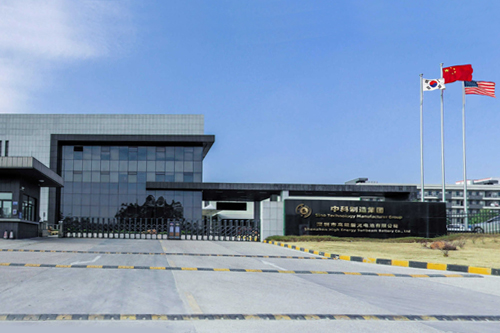The past, present and future research directions of AAA Ni-MH battery development should be focused on
Recently, at the invitation of the journal Science China Chemistry, Nobel Prize winner John B. Goodenough and others wrote a perspective article on the development history of lithium-ion batteries and the challenges and problems that need to be solved in future research.
1. Development history of lithium-ion batteries
Since Alessandro Volta proposed his famous "battery stack" in 1800, countless scientists and engineers have been obsessed with the development of batteries and have devoted huge efforts to this end. However, it is very arduous and challenging to make batteries have charge and discharge characteristics and the ability to store energy stably. Lithium, an ancient element created in the first minutes of the Big Bang, was not known to exist until 1817, when Swedish chemists Johan August Arfwedson and Jns Jacob Berzelius purified it from a mineral sample at the Uto Mine. Fortunately, its emergence brought a glimmer of hope to the development of batteries, and also laid the foundation for its subsequent success and dominance.
The development of cathode materials for lithium-ion batteries can be traced back to the 1960s, when French scientist Jean Rouxel and German scientist Robert Schroeder explored the reversible intercalation and extraction reaction of lithium ions in layered sulfides. In 1967, Kummer and Webber of Ford Company in the United States discovered that the two-dimensional Na and O layer of spinel alumina allowed rapid diffusion of Na+ and invented a sodium-sulfur battery that operates above 300°C. At the same time, the outbreak of the oil crisis made the then oil giant Exxon decide to diversify its business away from dependence on oil energy, which greatly promoted the emerging energy storage technology of lithium-ion batteries. They Recruiting some of the most important people in the energy field at the time, including Mr. M. Stanley Whittingham, another Nobel Prize winner this time. M. Stanley Whittingham joined Exxon in 1972. Based on his previous research on superconducting materials, he discovered that the insertion of potassium ions affects the conductivity of tantalum disulfide and releases considerable energy. However, when used in batteries, lighter mass will lead to better performance. He used titanium instead of tantalum to synthesize a layered TiS2 cathode material with high energy density. However, there is still the disadvantage of lower operating voltage.
Due to the extreme reactivity of alkali metals, the lithium ion electrolyte must be an organic electrolyte containing Li+. At the same time, when metallic lithium is used as the negative electrode, lithium dendrites are formed during the charging process, causing battery short circuit and other safety issues. In order to solve this problem, in 1980, John B. Goodenough and Peter G. Bruce used layered oxide cathode materials with a higher voltage platform (greater than 4V) for lithium-ion battery cathode materials and opened up the use of LiCoO2 in lithium-ion batteries. The brilliant, ordered Co-O octahedral structure allows a stable and reversible deintercalation reaction of more than half of Li+ from LiCoO2. Further development benefited from the development of the first commercially available lithium-ion battery in 1987 by Japanese scientist Akira Yoshino. He used Goodenough's LiCoO2 oxide for the positive electrode and a carbon-based material for the negative electrode that can also reversibly insert and extract lithium ions. This full battery will not cause structural damage to itself while functioning, greatly extending the battery life. Based on this technology, Akira Yoshino presciently applied for a patent, which led to the commercial lithium-ion secondary battery that is now widely used.
2. Challenges and future development of lithium-ion batteries
Although lithium-ion batteries have made great progress, there are still many challenges. These include: (1) The flammability of organic liquid electrolytes poses safety hazards in electrochemical devices; (2) The charging speed of lithium-ion batteries is limited, and rapid charging will cause uneven deposition of metallic lithium on the graphite negative electrode, causing dendrites. formation and battery short circuit problems; (3) Overcharging of lithium-ion batteries will cause the precipitation of oxygen in the cathode material, causing the battery to explode. In addition, there are problems with matching and monitoring of battery cells and battery packs, and high testing and manufacturing costs for large-scale battery systems (such as Tesla’s 7,000 battery cells). Simply increasing the specific surface area of carbon-based anode materials cannot solve the main contradiction.
In order to break through these application limitations, new battery materials and battery structures need to be developed. In these new batteries, organic liquid electrolytes can be replaced by oxide solid electrolytes and polymer electrolytes. However, whether these battery systems can be realized still requires relevant battery companies to launch market-oriented products. It can be predicted that lithium-ion batteries will continue to be the power system for wireless electronic devices and electric vehicles for a long time to come.
Read recommendations:
602535 500mAh 3.7V
What is the ternary lithium battery?solar energy storage lifepo4 battery 24v 200ah
Lithium iron phosphate battery pack and ternary battery
18650 battery pack manufacture
3V battery











































 360° FACTORY VR TOUR
360° FACTORY VR TOUR
 Whatsapp
Whatsapp
 Tel
Tel Email
Email TOP
TOP